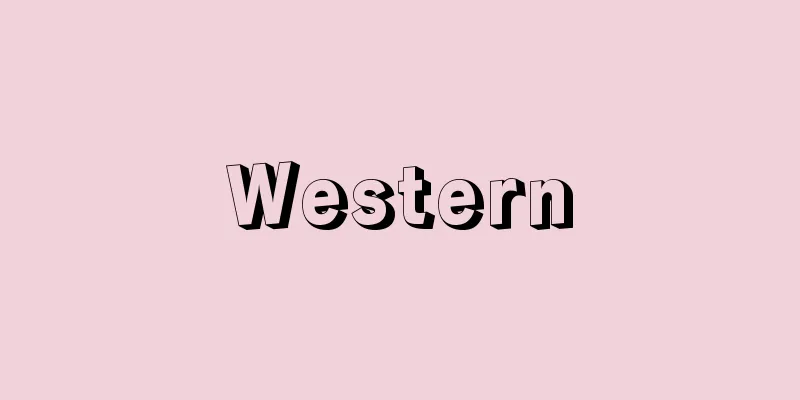Press photo - Houdoshashin

|
A general term for current photographs taken with the purpose of specifically conveying the social situation, such as incidents and accidents, and the social climate, customs, and manners of life. The term originates from a translation of the term "journalism" by photo critic Nobuo Ina (1898-1978) to describe the new photo documentary style and content published in daily newspapers and weekly magazines by the German publisher Ulstein in the 1920s. After World War II, this term came to be used to refer to all photographs that deal with social subjects, including newspaper photographs. While documentary photography in the broad sense objectively records and conveys natural and social phenomena in general, news photographs, while using the same subject matter, emphasize speed and are shot and composed to encourage rapid understanding by readers in media such as newspapers and magazines. Thus, the term also came to refer to the photographic styles of photojournalism and graphic journalism. The historical development of photojournalism began with the objective photographic expression of the Neue Sachlichkeit exhibition held in Germany in 1925. The Ulstein Company, which used everyday events as its subject matter, developed documentary photography into news photography. Later, photographers who fled to the United States with the rise of the Nazis introduced the style of news photography to magazines such as Life, which was launched on November 23, 1936 by H. R. Luce, publisher of Time and Fortune, and Look, which was launched six weeks later, and established a systematic editing and production method in which editors, reporters, and photographers worked together. Life called this the photo essay. At its peak, Life had a circulation of 8.5 million copies, played a role in campaigning for American politics and diplomacy, and all of its staff photographers were representative news photographers of the era. It was a media outlet with a strong social influence until the development of television. After World War II, Cartier-Bresson and Robert Capa founded the photojournalism agency Magnum Photos, and the 1960s was the most productive period for photojournalism, but the development of television led to the suspension of publication of Life in 1972, which led to a period of decline. Life was revived as a monthly magazine in 1978, but was discontinued in 2000 due to falling sales. Time Inc., the magazine publishing division of the American company Time Warner, subsequently relaunched Life as a newspaper insert in October 2004. It is a free weekly magazine that is inserted into the Friday editions of partner newspapers. In Japan, Natori Yonosuke, who studied photojournalism in Germany, founded the Nippon Koubou (Japan Workshop) in 1933, and under his influence Kimura Ihee and Domon Ken were active even after the Second World War. After that, print journalism declined due to the rise of broadcast media, and in the 1980s, photojournalism once again attracted attention with the appearance of photo-based weekly magazines that covered sensational news such as scandal reports, but in 2001, Focus, a pioneering magazine of this kind, ceased publication. However, photojournalists who pursue the universality of human beings by conducting long-term personal interviews on wars, racial issues, and other such issues, rather than just reporting on ephemeral topics, continue to be active all over the world. [Kouen Shigemori and Osamu Hiraki] "Complete Collection of Japanese Photography 10: Photojournalism" edited by Koichi Nakai (1987, Shogakukan)" ▽ "Complete Collection of World Photography 3: Photojournalism" commented by A. Goldsmith (1989, Shueisha)" ▽ "Photojournalism: What Photography Can Do Now" by Yoshio Tokuyama (Heibonsha Shinsho) [References] | | | | | | | | |Source: Shogakukan Encyclopedia Nipponica About Encyclopedia Nipponica Information | Legend |
|
事件や事故など社会情勢や、世相、風俗、習俗など社会の表情を具体的に伝える目的で撮影される時事的な写真の総称。語源としては、1920年代のドイツでウルシュタイン社が発行していた日刊新聞や週刊誌に掲載された新しい写真ドキュメンタリーの形式・内容に、写真評論家の伊奈信男(いなのぶお)(1898―1978)が、報道写真の訳語をあてたもので、第二次世界大戦後、新聞写真を含め、社会的な題材を扱った写真すべてをこの名称でよぶようになった。広義のドキュメンタリー写真が自然、社会一般の現象を客観的に記録、伝達するのに対し、報道写真は題材を同じくしながら、速報性が重視され新聞・雑誌などの媒体で、読者に迅速な理解を促すように撮影、構成される。そこで、フォト・ジャーナリズム、グラフ・ジャーナリズムの写真様式のことをもさすようになった。 報道写真の歴史的展開は、1925年ドイツで開催された「新即物主義展」の客観主義に徹した写真表現に端を発し、題材を日常の事象に及ぼしたウルシュタイン社が、ドキュメンタリー写真を報道写真へと発展させたのであった。その後ナチスの台頭でアメリカに亡命した写真家たちが、『タイム』『フォーチュン』の発行者H・R・ルースによって36年11月23日に創刊された『ライフ』や、その6週間後に創刊された『ルック』などに報道写真のスタイルを導入し、編集者、記者、写真家が一体となった組織的な編集制作方法を確立した。『ライフ』はこれをフォト・エッセイとよんだ。『ライフ』は最盛期850万部を発行し、アメリカの政治、外交をキャンペーンする役割を果たすとともに、そのスタッフ写真家にはいずれもこの時代を代表する報道写真家を配し、テレビが発達するまで、社会的に強い影響力をもつ媒体であった。第二次世界大戦後はカルチエ・ブレッソンやロバート・キャパたちによる報道写真の通信社「マグナム・フォトス」も設立され、1960年代は報道写真のもっとも充実した時代であったが、テレビの発達などによる72年の『ライフ』休刊で、衰退期に入った。なお『ライフ』は78年に月刊誌として復活したものの、売れ行きの落ち込みにより、2000年に廃刊している。その後、アメリカのタイム・ワーナー社の雑誌出版部門であるタイム社が、2004年10月から『ライフ』を新聞の折り込み誌として復刊した。これは、提携した新聞の毎週金曜日版に折り込まれる無料週刊誌という形をとっている。 日本ではドイツで報道写真を学んだ名取洋之助が「日本工房」を設立(1933)し、その影響下から出た木村伊兵衛(いへえ)や土門拳(けん)が第二次世界大戦後も活躍した。その後、放送メディアの隆盛に押されて出版ジャーナリズムが衰退するなか、1980年代に入るとスキャンダル報道などセンセーショナルなニュースを扱う写真週刊誌の登場で、報道写真はふたたび注目されるが、2001年(平成13)にはその種の雑誌では草分けである『フォーカス』が休刊となった。しかしそうした一過性の報道ではなく、戦乱や人種問題などについて長期にわたる個人取材を敢行し、人間の普遍性を追求しようとする地道な報道写真家たちはなおも世界各地で活躍を続けている。 [重森弘淹・平木 収] 『中井幸一編『日本写真全集10 フォトジャーナリズム』(1987・小学館)』▽『A・ゴールドスミス解説『世界写真全集3 フォトジャーナリズム』(1989・集英社)』▽『徳山善雄著『フォト・ジャーナリズム――いま写真に何ができるか』(平凡社新書)』 [参照項目] | | | | | | | | |出典 小学館 日本大百科全書(ニッポニカ)日本大百科全書(ニッポニカ)について 情報 | 凡例 |
Recommend
Myrōn (English spelling)
A Greek sculptor active between 480 and 450 BCE. H...
Badakhshan - Badakhshan (English spelling)
The name of a region in northeastern Afghanistan. ...
Paschasius Radbertus (English spelling)
...However, this issue was not addressed directly...
Temporary Leave System - Ichijikikyuuseido
…It is a method of employment adjustment in which...
Usuisha - Usuisha
A representative silk-reeling association establis...
Kodok millet (English spelling) Kodok millet
…Dallisgrass and bahiagrass are used as pasture g...
Johannes I Tzimisces
925‐976 Emperor of the Byzantine Empire. Reigned f...
Unkoin Temple
⇒ Acha no Tsubone Source: Kodansha Digital Japanes...
Kainit
A fruit tree of the Sapotaceae family native to Ce...
Music
…However, the concept of music in the West has un...
Heavenly Mantra - Tenenron
This is a translation of T.H. Huxley's Evoluti...
Buys-Ballot's law
This law was proposed in 1857 by the Dutch meteoro...
O'Neill, C.
…Together with the O'Donnells, they resisted ...
Kean, C. (English spelling) KeanC
…English actor. In 1814, he played Shylock in The...
Vaduz - Vaduz (English spelling)
The capital of the Principality of Liechtenstein,...









